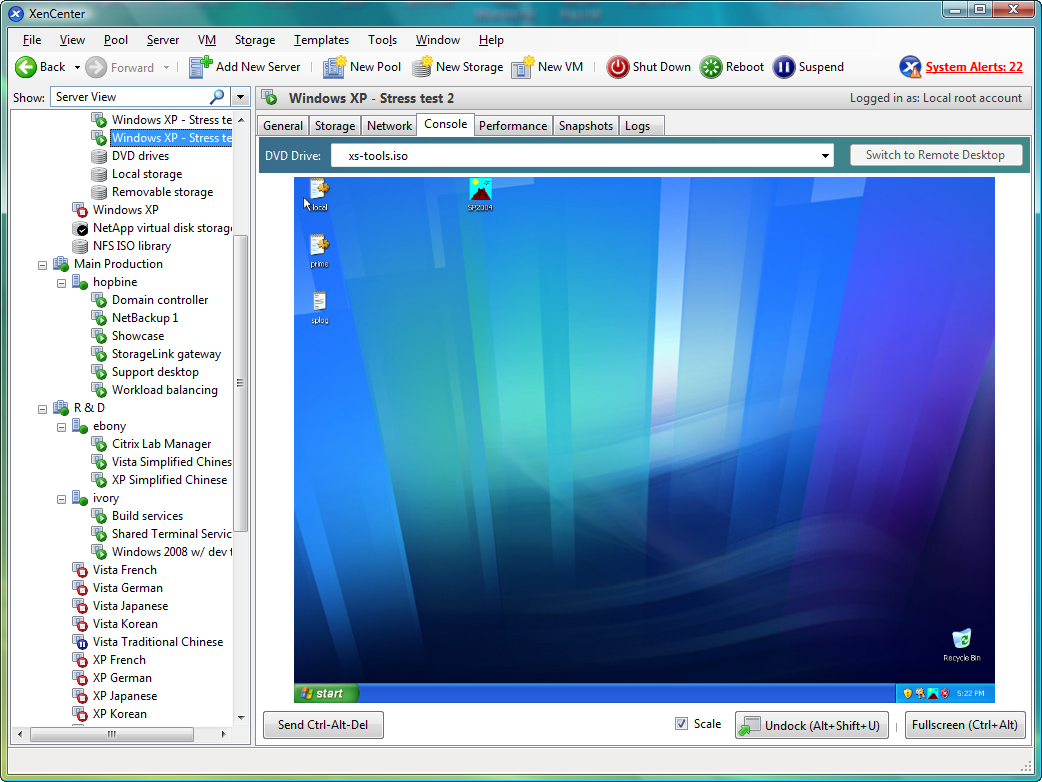

- #Windows server vdi with xenserver host full
- #Windows server vdi with xenserver host software
- #Windows server vdi with xenserver host license
- #Windows server vdi with xenserver host free
#Windows server vdi with xenserver host software
The only key management feature that is supported by both software programs is Thin Provisioning.One area where these programs tend to differ - and to a large extent explains the disparity in acceptance and usage levels between the two - is virtualization management. On the other hand, VMware vSphere ESXi has a total of 10 virtual NICs per virtual machine and a whopping 62 virtual disks per virtual machine. XenServer provides a total of 7 Virtual Network Interface Cards (NICs) per virtual machine and 16 virtual disks per virtual machine.

The XenServer has a total of 16 virtual CPUs per Virtual Machine (VCPUs) and VMware has double this, at 32 VCPUs. Virtual Machine Limitsīoth these software programs have a virtual disk size of 2000 GB, but the RAM per virtual machine does vary with VMware since it offers a staggering 1024 GB while the Citrix XenServer offers 128 GB per virtual machine. Both products do have a substantial client following dotted all over the globe irrespective of their pricing structure.
#Windows server vdi with xenserver host license
VMware, on the other hand, requires a proprietary license and is licensed per processor.
#Windows server vdi with xenserver host free
XenServer is open source and free and does provide per-server licensing. The Citrix XenServer and VMware vSphere ESXi pricing comparison offer a few interesting insights into the different business models that they have adopted. Related read: What are the main advantages of Citrix XenServer?Ĭitrix Xenserver Vs. Both systems have also gained lots of users in education, financial services, healthcare, and the government. Both of them support DAS, FC, and NAS storage while neither of them supports eSATA or RDM. The difference between them, when it comes to virtualization, is that VMware does support FCoE and SSD for Swap and does not support USB, SATA, SAS, NFS, iSCSI-which are all supported by Citrix XenServer.

Neither support operating system virtualization, which you can learn more about in our article on VMware vSphere Best Practices.īoth software suites support a variety of storage options.
#Windows server vdi with xenserver host full
Though they support various types of virtualization such as hardware-assisted virtualization and paravirtualization, only VMware vSphere ESXi does support full virtualization. Technical Specificationsīoth of these software programs run the Bare Metal (Type 1) hypervisor type and support x86 and 圆4 architecture. The Citrix XenServer is used by personal users and small to medium-sized businesses, while VMware vSphere ESXi is only intended for small to medium-sized businesses and is not structured for personal use. The main difference between the two is the intended usage of the software. Though they perform similar roles, they do have a few distinct differences which make them unique. The VMware vSphere ESXi is developed by VMware Inc., whereas XenServer is developed by Citrix. When assessing the pros and cons of Citrix XenServer compared to VMware vSphere ESXi, the first thing to note is that these two software systems are developed and supported by different companies.


 0 kommentar(er)
0 kommentar(er)
